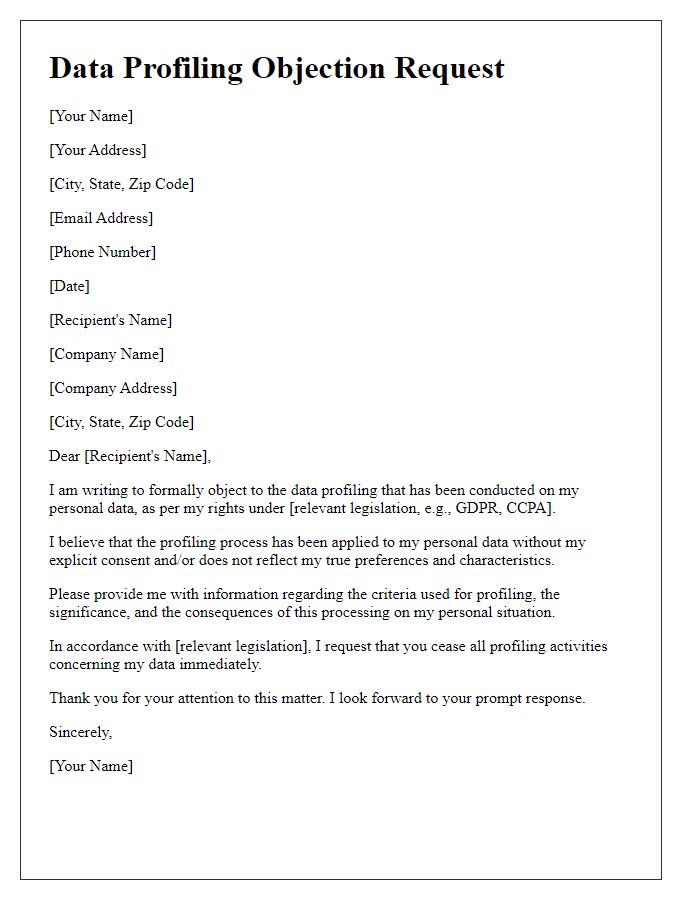In today's digital age, protecting your personal data is more important than ever. With so much information being shared online, knowing your rights and how to safeguard your privacy can feel overwhelming. That's where a personal data protection request comes into playâit's a straightforward way to take control of your information. Join us as we delve into the details and offer insights on how to effectively craft your own request for data protection; you'll find a wealth of helpful tips and examples!

Clear identification of the requestor
In personal data protection requests, clear identification of the requestor is essential. This includes full name, email address, and postal address to ensure proper verification. Additionally, including a unique identifier, such as a customer ID or account number related to the service, aids the organization in efficiently processing the request. Furthermore, providing specific details about the context of data use, like the date of last interaction or type of service used, enhances the clarity of the request. This identification process helps organizations comply with regulations, such as the General Data Protection Regulation (GDPR), ensuring a swift response while safeguarding privacy rights.
Specific data reference and context
Individuals can submit personal data protection requests to organizations under regulations like the General Data Protection Regulation (GDPR) or the California Consumer Privacy Act (CCPA). Essential components include referencing specific data types such as email addresses, purchase histories, or user activity logs. Contextual information is crucial, such as the time frame of data collection (2020-2023), the purpose of data processing (marketing, analytics), and the entity involved (company name, location). Clear articulation of rights under relevant laws enhances the request's effectiveness, ensuring organizations comply with legal obligations regarding transparency and user privacy.
Rights assertion under relevant laws
Data protection requests are vital for asserting individuals' rights under privacy laws, such as the General Data Protection Regulation (GDPR) in the European Union. Individuals can exercise their rights by requesting access to personal information held by organizations, particularly non-compliance issues related to data processing, retention periods (often not exceeding six months), or data portability. These rights include the right to access, correct, delete, or restrict processing of personal data. Entities processing personal information are required to respond within a specified timeframe, typically one month, while ensuring secure data management practices to protect sensitive information. Relevant legislation may vary by jurisdiction, affecting how individuals approach their requests and the obligations of data controllers.
Desired action and deadline
Personal data protection requests involve specific actions related to individual privacy rights under legislation such as the General Data Protection Regulation (GDPR). A request typically includes actions like accessing, correcting, or deleting personal data held by organizations. For example, individuals may request information on how their data is being processed, along with a specified deadline for the organization to respond, often within one month. The deadline is crucial, as Article 12 of GDPR mandates a prompt reply, ensuring that personal data rights are upheld swiftly and effectively to maintain trust and transparency.
Contact information for response
Personal data protection requests are critical for ensuring individual privacy rights are respected. Clear contact information is essential for effective communication and timely responses. Utilizing an email address, such as privacyrights@example.com, can facilitate direct correspondence. Alternatively, a dedicated phone number, like (123) 456-7890, enables immediate engagement for clarifying details regarding the request. Physical mailing addresses, such as 123 Privacy Lane, Privacy City, State, Zip Code, provide another channel for formal submissions, ensuring all data protection requests are properly recorded and addressed. Clear, concise information promotes transparency and accountability within organizations.













Comments